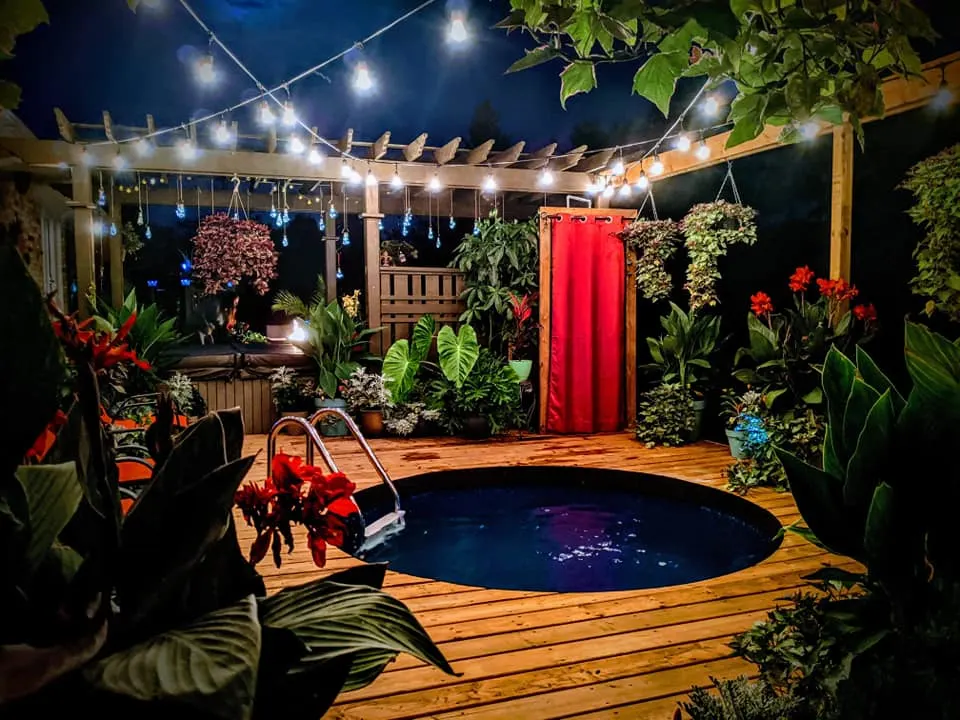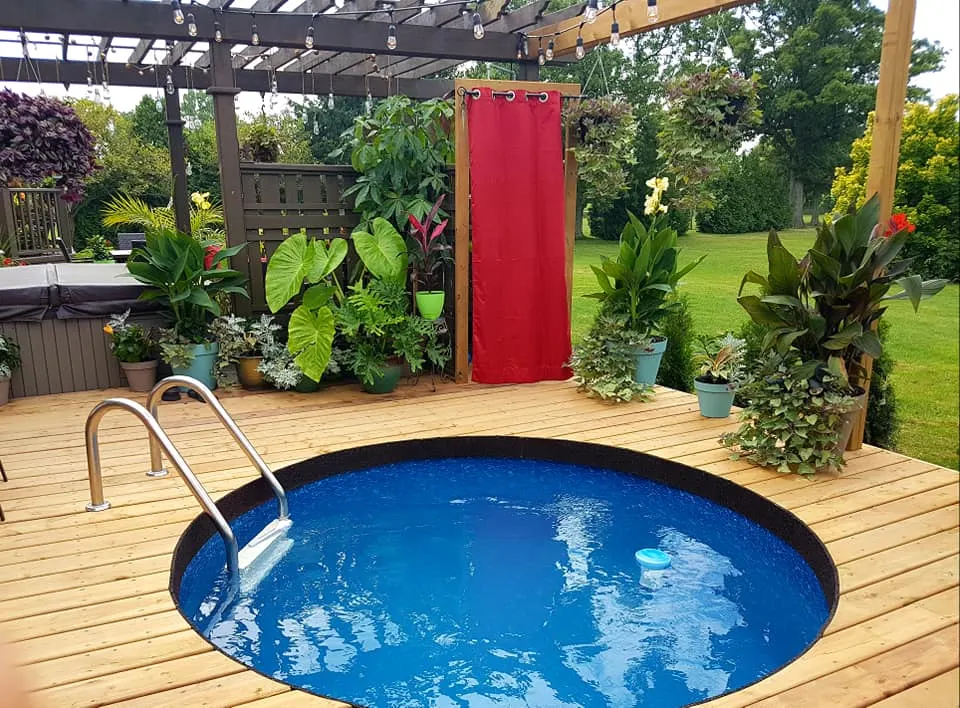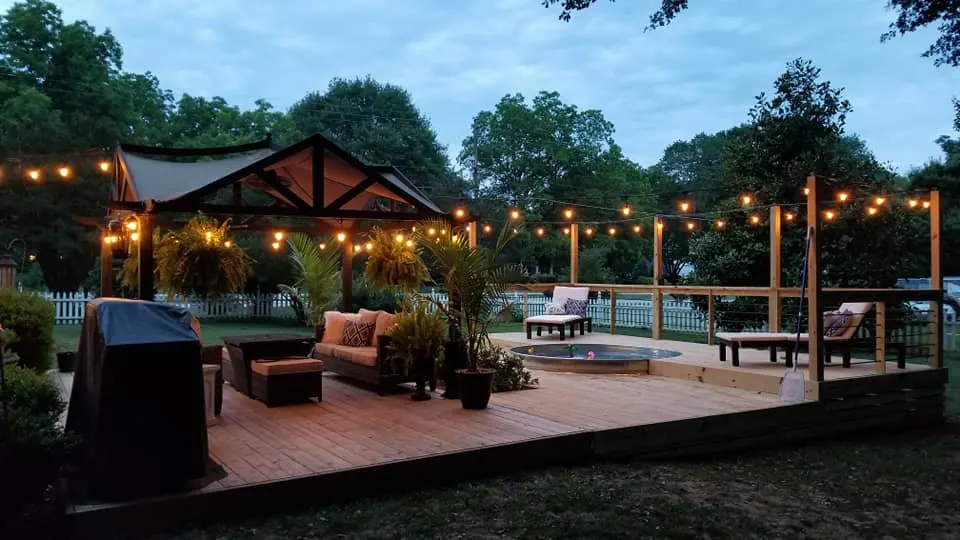Stock tanks, which are essentially oversized metal buckets used to store water, have evolved into an awesome and trendy way of cooling off during the hot summer months.
However, when you decide to bury a stock tank pool, the possibilities for customization are endless.
While usually placed above ground, you can bury a stock tank pool for reasons beyond aesthetics. Though it may be more expensive than just having it above ground, an in-ground stock tank pool may be enough to fit your needs.
Plus, they are cheaper than an in-ground pool that costs between $20,000 and $50,000, not to mention the landscaping and maintenance!
Having said that, let us look at the answer to the question, “can you bury a stock tank pool?” and how you can do it in more detail.

Source: Carilyn Jacqueline (Southern Ontario, Canada)
Page Contents
Can You Bury A Stock Tank Pool?
When you bury a stock tank pool underground, it can make your pool setup cooler — for multiple reasons.
What we mean by this is that while you can achieve an Instagram-worthy in-ground pool aesthetic, keeping the metal tank underground also has the advantage of the natural cooling effect of the earth.
The earth itself can help to keep the water cool naturally, even on the hottest days.
The pool’s lifespan also extends when you bury a stock tank pool. Even though above-ground stock tank pools are typically made of galvanized metal, they can still be damaged by UV rays and weathering.
However, when you bury a stock tank pool, it keeps them protected, potentially extending the life of your pool by a few years.
Are you sold on burying your stock tank pool? Then let’s proceed with the materials you may need and the steps to do so. Like most stock tank pool projects, this is a DIY project that requires some handiness skills and maybe an extra pair of hands.

Source: Carilyn Jacqueline (Southern Ontario, Canada)
What You May Need
Provided that you already know how to make a stock tank pool, you will need the following additional materials to bury a stock tank pool properly:
- Cut-resistant outdoor gloves
- Shovel
- Wheelbarrow
- Anchor landscape edging
- Weed barrier
- Pavers and paver edging
There may be a need for more or fewer materials depending on your preferred landscaping design. Generally speaking, the goal is to install your stock tank pool underground while successfully connecting it with your pool pumps and heaters.
Steps to Bury a Stock Tank Pool
By using the materials provided, you are now ready to bury your stock tank pool. As a guide, follow these steps:
- Place your stock tank and mark an outline : Be sure to consider the tubings, pool pump, and heater when doing so.
- Move away the stock tank and start digging : Take care not to damage underground cables or sprinkler lines.
- Dig until you reach the depth of your stock tank, and then add a few more inches : This will give you the option of adding pavers or decorative elements to the border of your pool.
- Dig an additional hole for the water pump and hoses : If you have a water heater, install it on a nearby sturdy wall or fence.
- Install the pool parts but don’t connect the hoses yet : This includes creating holes in your stock tank for the input and output tubes for your pool pump. Connect the hoses once you have placed the stock tank underground.
- Set the underground and lay the paver base : Make sure that the foundation for the stock tank is level.
- Place the stock tank pool underground : Fill in any gaps around the stock tank with dirt.
- Create a frame for your pump box : Build a rectangular frame from wooden planks to hold your water pump and hoses.
- Connect the hoses and fittings from the stock tank pool to the water heater and pump : Now that your underground stock tank is snug, you can connect the pool parts.
- Decorate your underground stock tank pool : You can place weed barriers around the perimeter of your pool to reduce weed infiltration, and then you can landscape the border of your pool with pavers and more.
Before filling in the gaps in your stock tank hole, try slowly filling up your pool to check for leaks along the way. If you don’t see any leaks, go ahead and fill it up.
Let your pool pump and water heater do their thing, and once everything’s set, soak in and enjoy the day!
As a side note, it may take a few weeks for the grass to grow once you have finished landscaping. It will depend on your local climate whether what you will need is cool-season grass, warm-season grass, or transitional grass for your backyard setup.

Source: Sheilah Dixon Huckabee (Georgia)
Final Thoughts
When you bury a stock tank pool, you can increase the backyard appeal of your home. Despite being more labor intensive, if you wish to create a more unique look with your stock tank pool, then it may be worth the extra time and effort.
Whether you want to integrate your buried stock tank pool into a home with a sleek metal aesthetic or in a barndominium with strong stone exterior features, having it buried allows it to be integrated seamlessly into the home’s overall backyard design.
Noah Edis is a passionate staff writer at Barndominium Life, a leading online resource for all things barndominium. With years of experience in the writing industry, Noah has made a name for himself as a skilled storyteller and a knowledgeable authority on the topic of barndominiums.
Noah’s interest in barndominiums began when he stumbled upon the concept while researching alternative housing options. Intrigued by the rustic charm and functionality of these converted barns, he soon became obsessed with the idea of living in one himself. He spent countless hours researching the construction, design, and decorating aspects of barndominiums, and soon became an expert on the topic.
As a staff writer at Barndominium Life, Noah enjoys sharing his knowledge and passion for these unique homes with others. He has written numerous articles covering a wide range of topics, from the history of barndominiums to the best ways to decorate them. Noah’s writing is informative, engaging, and always on-trend, making him a valuable asset to the Barndominium Life team.
Noah is a graduate of the University of British Columbia, where he earned a degree in English Language and Literature. When he’s not writing about barndominiums, he can be found exploring the great outdoors, trying new restaurants, or spending time with his family and friends. Noah is dedicated to his craft and is always striving to improve his writing skills and knowledge of the barndominium lifestyle.
Connect with Noah on LinkedIn
